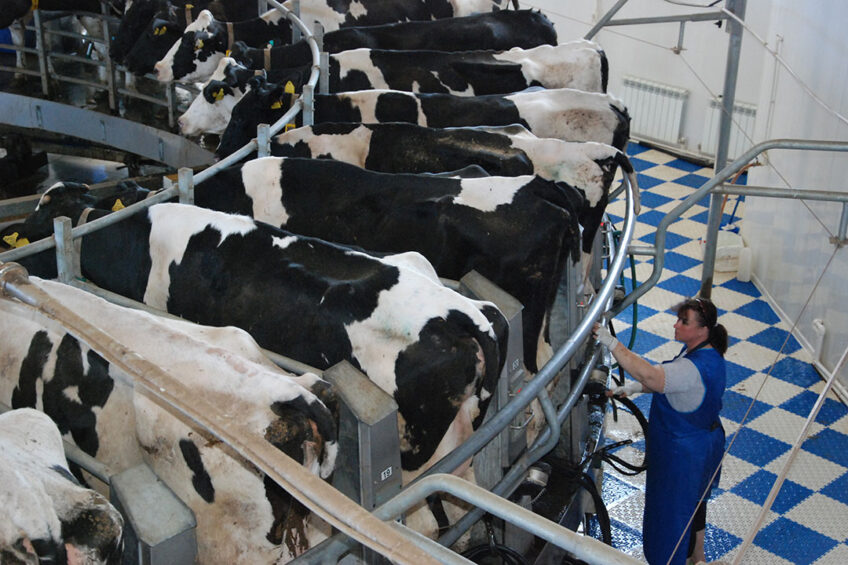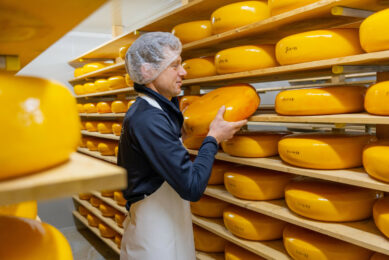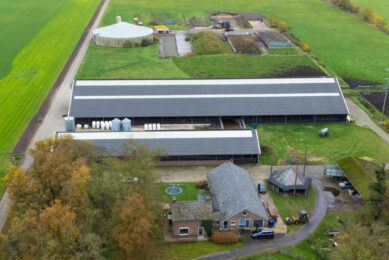What’s the impact on EU when milk quotas ended?

The milk market has for many years been characterised by regulations and quotas, but in 2015 the EU’s milk quotas were lifted. How has this thus far affected the EU?
Researchers from Aarhus University, along with researchers from 5 other European countries, dived into the effect of the end of the milk quotas on milk production in Europe.

“Over the years, the EU’s market organisations have gradually been reformed. One of the ways in which milk producers have been supported in the past was through minimum prices and support purchases, whenever global milk prices were very low. It ensured a stable milk price, but it also created problems in relation to the WTO, who called it competition distortion,” says researcher Martin Thorsøe from the Department of Agroecology at Aarhus University.
Lifting of milk quotas
In 2015, milk quotas were lifted and EU farmers were able to produce the amount of milk they wanted. This was a major change, and a team of researchers has investigated what has happened after the phasing out of milk quotas in Denmark, Greece, France, Latvia, and the United Kingdom.
“It is very interesting to look at what has happened after the quotas were lifted, so we have investigated what has happened to the market, and not least what has happened to the milk producers. After many years of completely stable market conditions, the production systems have had to adapt to completely new conditions. It has required adaptation. We have looked more closely at how the systems have reacted to the changes across the 5 European countries,” says Thorsøe.
 Global market prices
Global market prices
Overview of prices for: raw milk, dry whey, skimmed milk powder, cheese and butter, as well as global dairy trade and world prices for dairy products. Stay up-to-date…
Widely different reactions
The research was carried out as part of the EU project SUFISA, which provided access to very large data collections.
“At SUFISA, we have conducted individual interviews with people in the value chain, held focus groups with producers, made questionnaires, and compiled it all into national reports. Those reports have helped us to create really good and comprehensive overviews of the development of the milk market and the implications for the producers in the 5 countries we represent,” says Thorsøe.
There are countries that have experienced problems. This is partly because one has not been able to produce milk at a lower milk prices, and partly because it has been difficult to deal with the fluctuations
There is a big difference in how the dairy industry has reacted in the 5 different countries. For example: producers in Denmark have chosen to gradually increase production after the end of the milk quotas, and farmers have tried to reduce the production costs by expanding production locally. On the contrary, dairies in England and France, for example, have introduced capacity constraints to ensure stable production and imposed new informal production restrictions on producers. In Greece, which already had a small and fragmented dairy sector, farmers did not have the finances to adapt strategically to the new lower prices and production has declined here.
“There are countries that have experienced problems. This is partly because one has not been able to produce milk at a lower milk prices, and partly because it has been difficult to deal with the fluctuations that come in prices when the market arrangements that previously ensured a stable price do not exists any longer,” says Thorsøe.
2 types of response
The researchers have set up a table in which you can clearly see the reactions in the different countries at farmer level and dairy level, respectively.
“Here you can see how the systems have reacted in the different countries. Overall, there is a response on 2 levels to the changing market conditions,” says Thorsøe. “It is important to note, that there is a difference in ownership of the dairies, which affects their way of reacting. In Denmark, we have cooperative dairies, which means that the farmers decide who sits on the Board of Representatives, and thus the farmers have some say in the company’s strategy. In other countries, the dairies are private, such as in some places in France, Latvia, Greece, and the United Kingdom. It has an impact on how changes in the market are handled. We have also included this in our overview table.”
“Our results show that there have been changes in all 5 European countries that we have examined; some have had bigger problems than others. If we look at Denmark, production has increased after the end of the EU milk quotas, but many producers are challenged by the more unstable milk prices. At the same time, we can see that production has fallen in virtually all the other countries. The latter is an expression of a globalisation of market conditions, and that Danish producers before the end of the milk quotas have had a great desire to expand their production,” says Thorsøe.
Since Denmark became part of the EC in 1973, European milk production has been subject to different strategies and market conditions. In the early 70s there was an underproduction of food in Europe and therefore the strategy was to produce as much as possible. But by the early 1980s, there had been an overproduction that led to the creation of milk quotas in 1984 creating a national ceiling for how much milk a country was allowed to produce.
Source: Aarhus University
Author: Camilla Brodam
Join 13,000+ subscribers
Subscribe to our newsletter to stay updated about all the need-to-know content in the dairy sector, two times a week.










